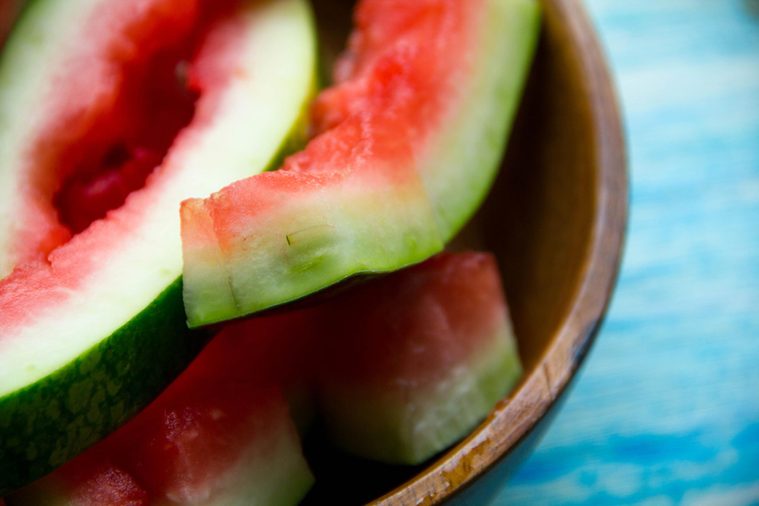
Watermelon rind as a sex booster
Watermelon rind has nutritional benefits too: Not only does it contain vitamins C and B6 (skin, immunity, and nervous system boosters), but it could also sweeten your sex life. In a 2008 study, Texas A&M University researchers found that watermelon rind has high concentrations of the compound citrulline, which your body converts into an amino acid that helps improve circulation and relax blood vessels—even down there. To salvage rinds, blend them into a fruit smoothie, or try sautéing and adding to a stir-fry. They’ll contribute a zucchini-like texture and a slightly sweet flavor.
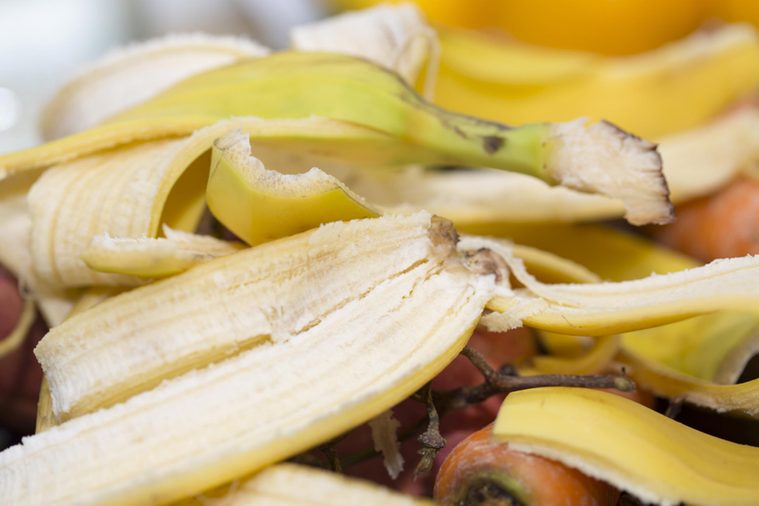
Banana peel as bandages
About 40 million tons of banana peel are disposed of or go unused each year worldwide, according to a 2013 study. Use yours to polish leather (rub it against the outer side, then buff with a soft cloth) or to heal wounds (rub the pulp side on bruises and scrapes to deliver potassium) or to fertilize plants (soak peels in a jar of water—then mix five parts tap water to one part banana-water). You can also eat them! A 2011 article in Applied Biochemistry and Biotechnology found that banana peels contain many healthy antioxidants like carotenoids and polyphenols (thought to prevent diabetes, heart disease, and cancer). Wash well, then blend into a fruit smoothie. Alternately, boil chopped peels for 10 minutes and add to your favorite dish. In Indian dry vegetable curry, for example, chopped banana peels boiled with turmeric powder and salt are mixed with ingredients like mustard seeds, green chillies, and cabbage for a healthy meal. Here’s what to do with produce that’s about to go bad.
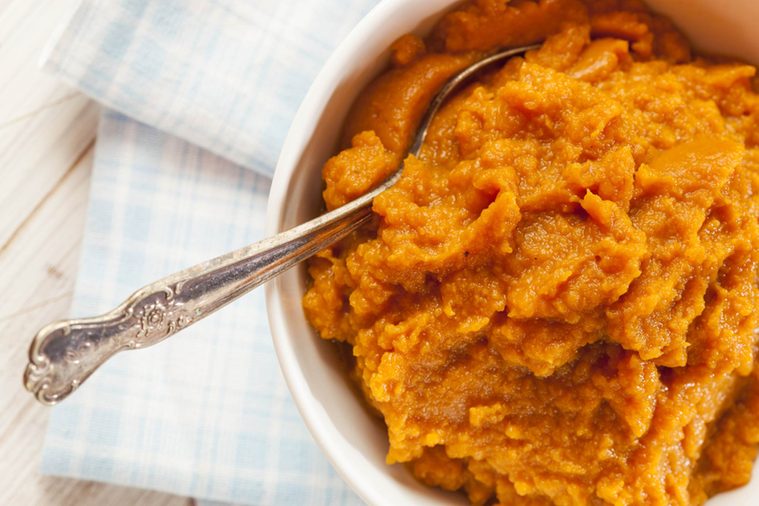
Pumpkin filling as face mask
Pumpkin is filled with antioxidant vitamins A, C, E, exfoliating retinoic acid, and soothing zinc, which make for a perfect face mask. Try mixing 2 teaspoons of canned puree (or, pureed Jack O’Lantern) with 1/2 teaspoon honey, 1/2 teaspoon milk, and 1/4 teaspoon cinnamon. Apply and leave the thick mixture on your face for 10 minutes before washing off. For dry skin, add a dash of brown sugar to the mix to exfoliate and moisturize. For oily skin, add a few drops of cranberry juice to help balance the skin with even more antioxidants.
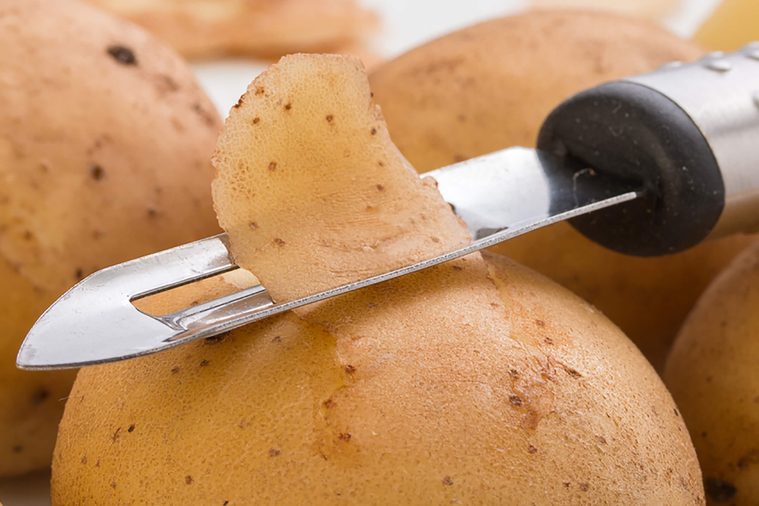
Potato peel as anti-aging secret
Use leftover peel and pieces for a little pampering—used like spa cucumbers slices, potato will help lighten stubborn, dark circles under your eyes. The secret ingredient is catecholase, an enzyme found in potatoes that has skin-lightening properties (some home remedies even suggest rubbing potatoes on freckles or age spots you’d like to fade). Cut any leftover potato pieces into two thin slices, and place over your eyes for 10 minutes. The juice will seep into your skin and work its magic, especially if you continue the treatment twice a week. These are the 13 food scraps you never knew you could eat.
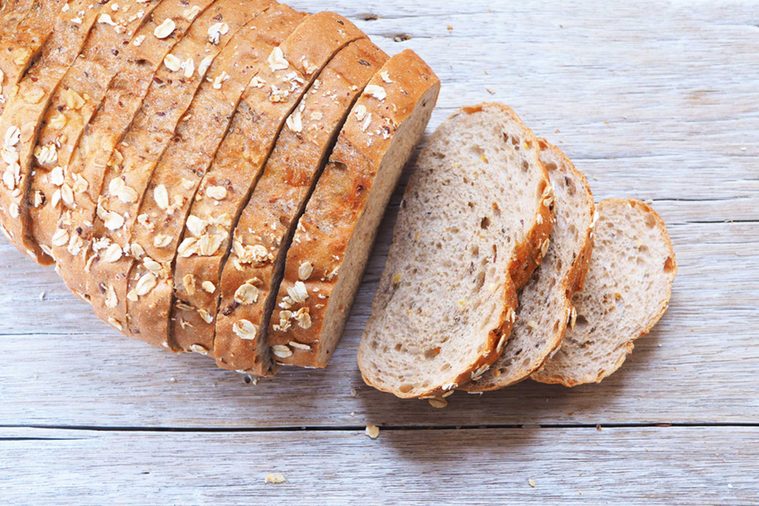
Stale bread as eraser
Aside from making bread crumbs or croutons, you can run stale bread through your spice or coffee grinders to remove any leftover odors or residue. If you have smudges or marks on the walls—even crayon—remove the crust, wipe the spot with a soft cloth, and then rub semi-stale bread against it. The sponge-like texture will work like a store-brand cleaning eraser.
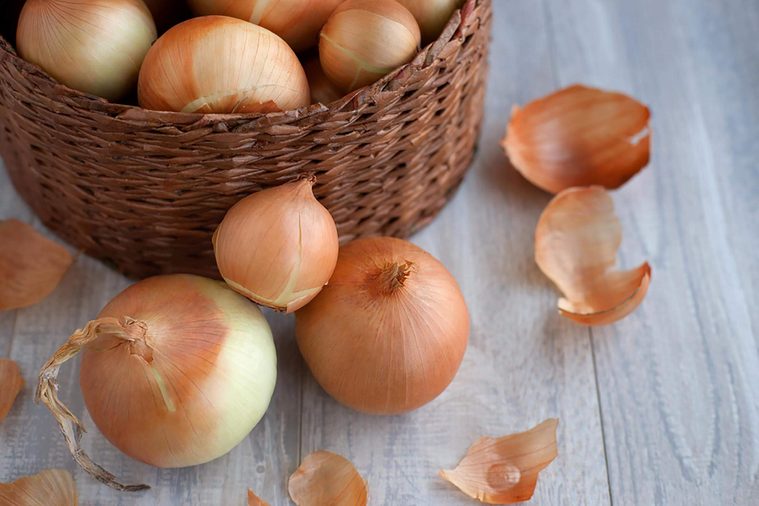
Onion skin as anti-inflammatory agent
The flaky wrapping around onions is rich in nutrients, like quercetin, a plant pigment that can prevent arteries from clogging, lower blood sugar, and reduce inflammation. Still, a 2011 study found that in the E.U. alone, 500,000 tons of onion waste (like the skin and the bulb) are thrown away each year. Even though the skin isn’t edible, you can still reap the health benefits by adding onion skins to broth while cooking soups and stews. You’ll wind up with a rich, flavorful taste, too; just remove the skins before serving. Here are the 21 things grocery stores don’t want to tell you.
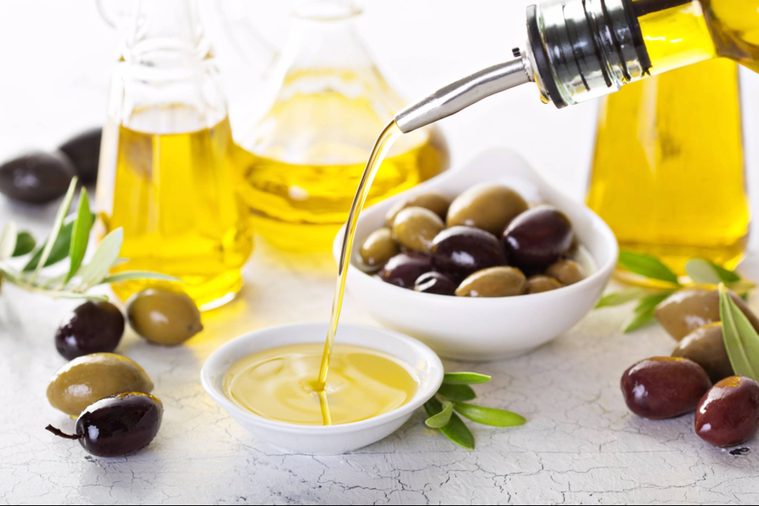
Expired olive oil as makeup remover
The forgotten bottle of olive oil in your cupboard has lost its fragrant taste, but you can still find fresh ways to use it. Dab a bit on the teeth of a zipper that just won’t budge or use it to wipe off eye makeup without a hassle. Even more clever uses: Massage into your dog’s paws to relieve cracking or pain, rub into the leaves of potted plants to make them look healthier, or use to polish your shoes.
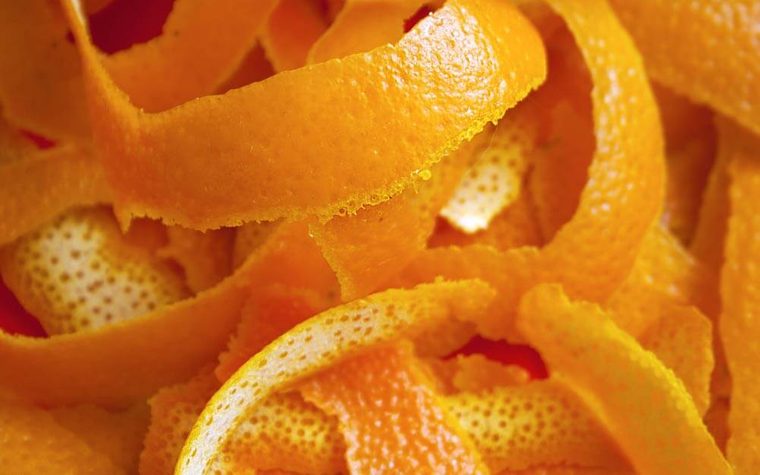
Orange peels as an ant repellent
You might think using food parts to repel pests is a terrible idea, but orange peels are actually a natural ant repellent. They contain an oil made of limonene. This substance is naturally repellent to ants, so if you have a creepy-crawly problem, consider using your leftover orange peels to banish them. Livestrong.com recommends putting some in a blender, mixing with water, and dabbing the mixture on and around anthills. You can also try putting it, or even the peels themselves, around entrances to your house, or bringing some with you if you go camping or hiking. And it’s not just ants that flee from limonene; flies and mosquitoes hate it, too. These are the 11 things you should always wash before cooking.
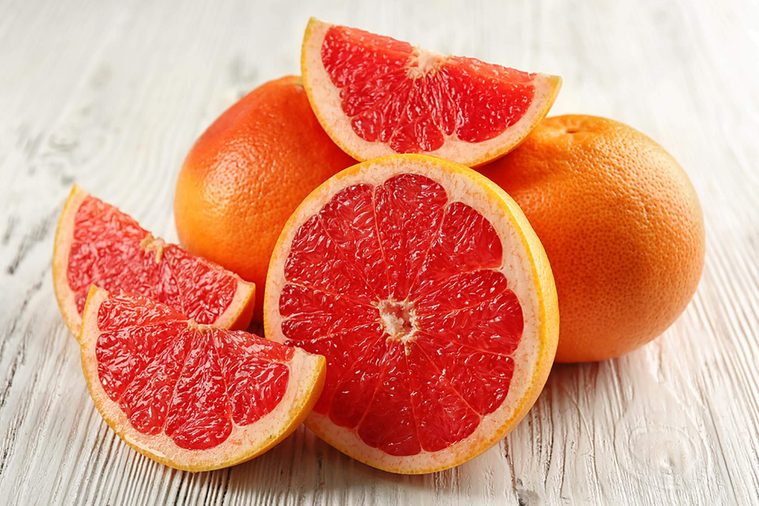
Grapefruit peels as a cholesterol booster
You probably already know that grapefruit has lots of health benefits, but you may not realize that the peel is a powerhouse food, too. Grapefruit peels are packed with pectin, a fiber that can help lower cholesterol. But since you’re not in the habit of eating grapefruit peels, how are you supposed to reap the benefits? Well, you can grate them, or use a zester, and spread the shaved peel on salads or add it to loose-leaf tea. Or, if you want to make a full snack out of them, try making candied grapefruit peels by boiling them with sugar and water. They make a tasty but low-calorie snack.
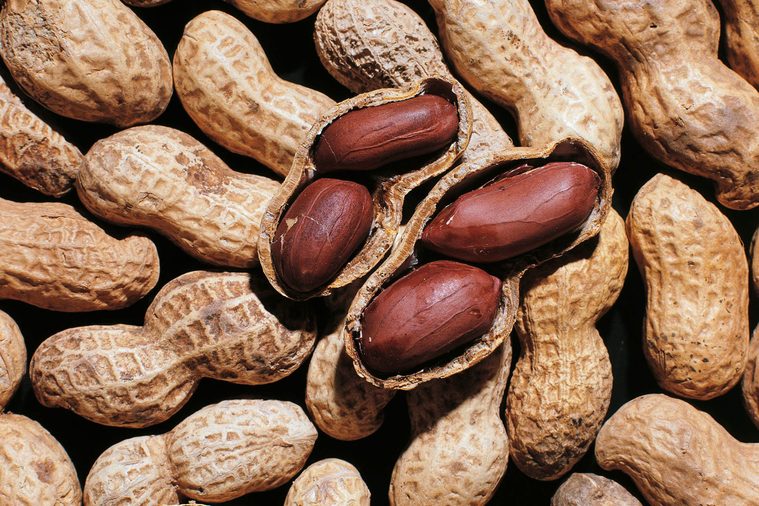
Peanut shells as an environmentally friendly kitty litter
Want to save money on cat litter, and help save the environment as well? Repurpose peanut shells instead of throwing them away. Soak them in water, add some biodegradable dish soap, and sprinkle on some baking soda. Some kitty litters sold in stores already use peanut shells, and a homemade litter is more environmentally friendly since it’s free of chemicals. Here are 13 foods you should never, ever eat raw.
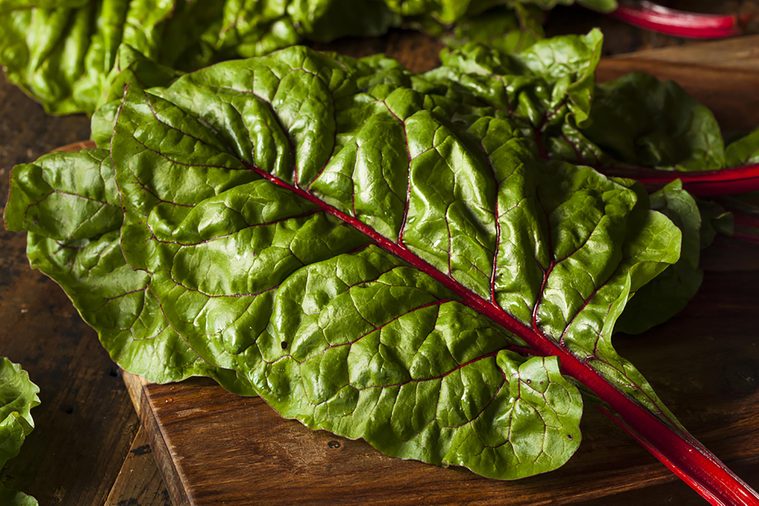
Swiss chard stalks as immune booster
Swiss chard leaves are a Mediterranean cooking staple, but it may be tempting to disregard the crunchy, somewhat-bitter stems. Think again, researchers say: A German study found that those stems are packed with antioxidants and glutamine, an immune system-boosting amino acid that helps the body recover from surgery and wounds. Try cutting into one-inch cubes, roasting for 20 minutes, and seasoning with lemon juice, chopped garlic, salt, and pepper. Or add a whole Swiss chard (leaves and stalks included) to the blender for a powerhouse addition to your green juice or smoothie—it will pack very few calories but a lot of vitamin A and vitamin C. Don’t miss these 20 food facts that will change how you eat.